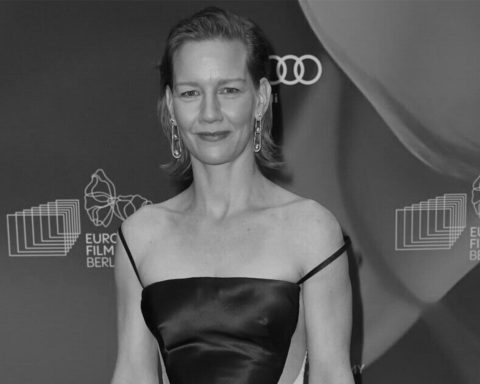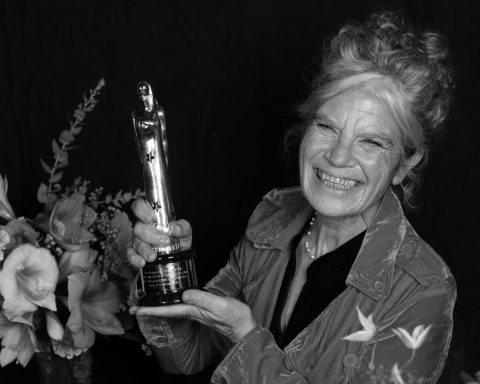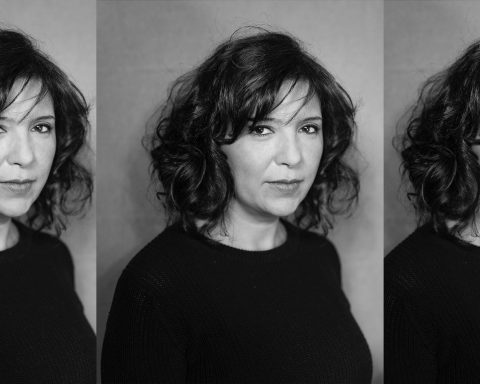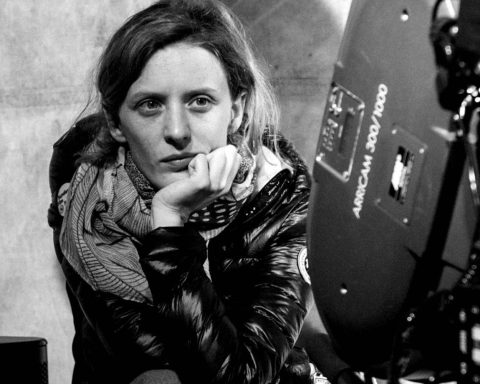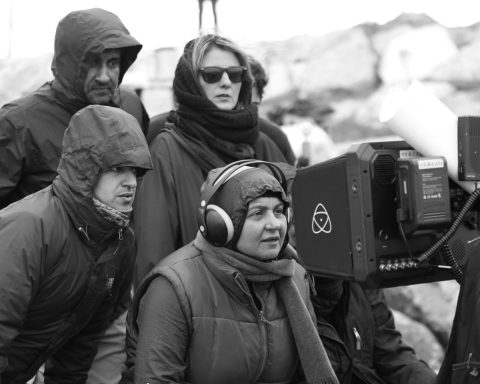Lucile Hadžihalilović was born in Lyon, France, and studied filmmaking at the Institut des Hautes Études Cinématographiques in Paris. She has worked as an editor, frequently collaborating with director Gaspar Noé. Her work as director includes “La bouche de Jean-Pierre,” “Innocence,” “Evolution” and “Earwig.”
At this year’s RVK Feminist Film Festival, that hosted a retrospective of her work – including opening the 2023 edition with her film “Innocence” –, Tara Karajica talked to Lucile Hadžihalilović about her filmmaking career so far and women in film.
What made you want to become a filmmaker?
Lucile Hadžihalilović: Well, it’s not very original, but I guess it’s because I had very strong emotions when I watched films in the cinema when I was a teenager. And, I thought it was great to share my dreams and my worlds with other people who would be sitting in the dark or together and experiencing it. So, I suppose I thought cinema was a way to share emotions with people.
Classifying your work as horror is perhaps a stretch and you have also always been hesitant to categorize your films one way or the other, but you don’t deny that you’re making genre films. For example, La bouche de Jean-Pierre bears some of the stylistic marks that would later become known as “extreme cinema.” Can you comment on that?
L.H.: When I work on a film, I don’t ask myself what kind of genre it is and I guess it would be hard for me to define what kind of genre they are, if you mean by genre: Is it horror? Is it fantasy? Most of my films, except for maybe La bouche de Jean-Pierre or Mimi, which is more realistic a bit, deal with imaginary worlds and maybe sometimes surrealism. So, I think it’s a bit difficult to put a label on that. As for extreme cinema, “extreme,” I think you are referring to this kind of label they put on French extremity and, in fact, this is an invention of a journalist and it’s an easy way to put some films together. I think I’m more of an outsider, rather.
Your style is unique and very, very recognizable. Atmospheric, fairy tale-like in your later films, in Innocence, Evolution and Earwig. It’s different in content, but has similar tropes such as relationships between adults and children, power dynamics driven by self-deception and violence physical or otherwise. Can you can you talk about that?
L.H.: Well, yes, they are all fairy tales even if the fairies are more or less dark. The very first one, La bouche de Jean-Pierre, is kind of fairy tale; in a way, it’s a bit like Red Riding Hood. That’s why the title is “La bouche de Jean-Pierre,” like “la gueule du loup.” I think, also for me, cinema is not a verbal form of art. It’s really visual. It sounds also, but not necessarily with words, not necessarily with dialogues. So, I have a tendency to not use much dialogue in my films to try to build the microcosmos, the little world, each time with different elements. In Innocence, it’s the forest and in Evolution, it’s the sea and it’s maybe linked to glaciers and other kinds of things, but I have a tendency to imagine it all first, with visual elements and to build on that even if there is a kind of story or narrative anyway. Then, there is also the pace. I like to try to immerse the audience in this world, put them in the essence, in the perceptions of the other characters. And so, it’s kind of a subjective approach. This is also why the pace is usually a bit slow or immersive because it gives me the opportunity to work a lot on the soundtrack, even if it is minimalist, and to use only elements that belong to the universe, so I like it when there is not too much musical score because that is a way – sometimes too easy – to convey the emotions of the characters, but to me, it comes from the soundtrack in a broader way.
There is a sheltered sort of violence in secluded places like, for instance, the forest in Innocence and the sea in Evolution. Where does this come from?
L.H.: I don’t know! Maybe there is something I don’t know about from my childhood, like the idea of being protected from the outside for some reason. But it’s very hard to say, really – I can see that it’s something that is repeated. And, these secluded places, both like cocoons or shelters, that at some point become prisons. Because it’s not only the vibe, let’s say that the oppression – if not the violence – it’s not outside; it’s also inside – it’s the rules you have to obey. So, at some point, this shelter becomes also a prison and it’s a bit the same for Earwig. The apartment is really a cocoon, a shelter, and then, in a way, they are thrown away from this shelter by the master, whoever the master is. So, yes, these are ambiguous places, in fact.
It’s exactly what you are saying – your cinema is a cinema of contrasts. There is innocence and cruelty, beauty and ugliness, delicacy and violence. And, in a way, this seduces the audience, but then also disturbs us, the viewers. What’s the motivation behind that?
L.H.: The motivation is always hard to answer. But I like to be ambiguous. I think it’s how life is. I think it’s more interesting when it has two colors in a way. And, yes, there is a something disturbing in beauty and because it could be beautiful and attracting on some levels, it’s even more disturbing. I mean, I usually don’t have explicit violence and gore elements in my films. But I like it when things are ambiguous because I don’t think things are black or white or good or bad. I think it’s a combination of that. And, the ambiguity of feelings is interesting.
Yes, because the violence, as you said, is not explicit. You know it’s there, but you don’t see it and yet you really feel it.
L.H.: The presence of it without it being shown, I think, creates a tension, which is interesting in films.
Can you talk about your collaboration with Gaspar Noé and your work as an editor?
L.H.: I love editing and, after school, I worked as an editor or assistant editor at the beginning and it is really a place in filmmaking that I really liked very much. Regarding my collaboration with Gaspar Noé, it was more at the beginning. So, when we began to make films, we created this company to produce our films – at least the short films – which were, in fact, Carne and I Stand Alone, which is not a short film, but we produced it a bit as a short film, and it turned out to be a feature. Also, La bouche de Jean-Pierre. So, because we were making these films, producing these films by ourselves, with very little money, we worked a lot on each other’s films, being involved in a lot of aspects on these films. Gaspar did the camera on La bouche de Jean-Pierre and I did the editing on Carne and I Stand Alone. But then, after that, in fact, we didn’t work so much together. Of course, we talk about each other’s films and projects that are at different stages and so on but, apart from Enter the Void, where I collaborated on the script, we don’t really work anymore on each other’s films because I don’t edit anymore really. And Gasper is not doing the camera for other people’s films anymore either. So, we still have the production company, Cinema de la zone, and we co-produce Gaspar’s films a bit. But that’s the way we collaborate, in fact.
Can you talk about short films? You are one of the few filmmakers who move between forms so freely.
L.H.: Well, what is great with short films is maybe that you have more freedom than with features because there is less of an commercial aspect to it. So, that’s what is interesting about making short films. Also, the different lengths. It’s interesting to experiment with different lengths. You can make a five-minute film; you can make a twenty-minute film… Also, a film like La bouche de Jean-Pierre, which is less than an hour, is also a length that is interesting to us. So, that’s the reason why it’s interesting to make short films. The problem is that even if it’s quite short, it can take you a lot of time and energy. So, sometimes, it’s more worth it to try to make a feature rather than a short film because, at the end of the day, it’s easier to show it, but it’s a good place to experiment, I would say.
Do you have a favorite film among the films that you’ve made and one that has changed you as a filmmaker? Have you actually changed as an artist?
L.H.: I guess I have after each. I have changed because each film is a new experience. You learn different things, you make different mistakes, you meet different people… And so, each film, I would say, has changed me. Also, the feedback I got from the audience is a contribution to this change, so I wouldn’t pick one specifically. I mean, I’m happy with all my films, with the way I made them. I was lucky to be free to make these films the way I wanted. That doesn’t mean that I don’t think there are mistakes or things I would do differently if I could, but at least I did it the way I wanted, so I was very happy about that. And, that’s also maybe why they changed me.
What is your take on the situation of women in film today? Do you see any change? How is it in France? What could be better? What not?
L.H.: Of course, today, there is more conscience about the fact that there is still no equality. I think it’s really changing very fast, at least in France, because there are more and more women directors, and also women working in different fields in cinema. So, that is changing and I think, very much. I think there is a really new young generation, where the number of women is higher than it was ten years ago. It was less talked about, there was less conscience about that, the chances or access to budgets or certain genres for women were not the same. I never thought that if I had difficulties to make films, it was because I was a woman. I thought it was because of the kind of thing I wanted to do. But when you see the numbers, then yes, you have to recognize that there are still not enough women directors, but I think it’s changing a lot. I am optimistic for the future.
Do you have a favorite film by a female filmmaker, and a favorite female filmmaker?
L.H.: Yes, I love Maya Deren. I think she’s very inspired and inspiring. Maya Deren’s films, I think, are amazing films. Recently, I watched an animation film that I thought was extraordinary. It’s by Suzan Pitt. She made an amazing animation film called Asparagus.
What are your next projects?
L.H.: You know, it’s said to be bad luck to talk about it, but I am working on something, which I hope is a bit different from my previous films, but it’s going to be a sort of fairy tale again. So, that’s about all I can say for now.
Photo credits: Courtesy of Lucile Hadžihalilović.
This interview was conducted remotely at the 2023 RVK Feminist Film Festival.




